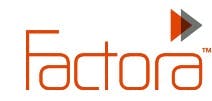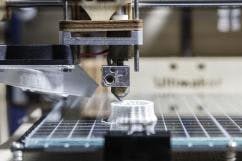I dropped in at Starbucks to pick up my coffee, barista-ed to my tastes. Then I went home and watched YouTube from my subscription list of content that matches my interests. Finally, I ordered a pizza online, choosing custom toppings and tracking it dynamically as “Susan” prepared my meal.
The race to customization
Today the trend for personal customization is growing, CPG and food & bev manufacturers are scrambling to meet the demand for personalized products and services (and our willingness to pay a premium) along with our preference for online purchasing. And it’s no wonder—there are big upsides. They can create higher-margin products. They can gain market share from those who do not adapt. And with this, they can drive emotional brand loyalty, which, once established, is hard to break.
Make the supply chain more supple
To make mass customization profitable, manufacturers need to maximize supply chain flexibility beyond today’s boundaries.
And this is where IoT technology shines—by allowing real-time visibility into supplier and site-production data. Since profitability depends heavily on allocating the most cost-effective production stream, real-time consideration of the capabilities/location of both supplier and manufacturer changes the game completely.
Historically, connecting thousands of production sites and mapping the value chain would have cost far more than the savings generated. Today, all you need is an IoT platformSupplier advantages
From the supplier, this infrastructure can be used to share data with multiple manufacturers (clients) in a cost-effective way, each with their own segmented view of the data. It’s a competitive advantage and helps avoid the cost of co-location manufacturing sites.
And there’s another competitive advantage: the ability to bid profitably on short runs. Think about it…the traditional long run dominated so heavily because there was no other way. No longer! With real-time agility, suppliers can produce short-run customized orders easily and profitability. Without the dreaded cost of inventory that never gets used.
Manufacturer advantages
For the manufacturer, this new supple supply chain and real-time visibility helps to create product in the most profitable way possible. Plus–Right First Time! Learning from your supplier that a batch of raw material has specific quality, you can adapt processes in real-time and get it Right First Time! What’s that worth to you?
Early adopters are already in the market
Does this sound too Star Trek to you? It’s here! Early adopters are already delivering or using third parties to prototype. Today you can order your own personalized can of Coke, or your own personalized razor, as I did for my father recently–at a reasonable price!
Of course, these and other examples are still small-scale and cosmetic. To get to full-scale customization, the cost model must be viable. But the demand is there, the clock is ticking, and IoT smart manufacturing is the platform that can deliver.







